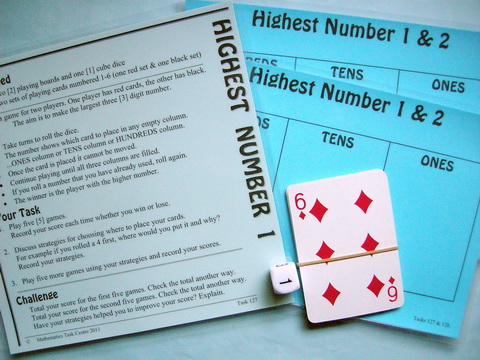Highest Number 1
Task 127 ... Years 2 - 10
Summary
A simple and relatively well known dice and place value game with many variations. At one level the task is worthwhile practise of place value, but as soon as the question about strategy for placing a card is raised, higher order thinking is expected. Now, either informally or formally, the task becomes a probability based investigation. Strategies could be explained in words or in a What would you do if the first card was...? table like this:

This cameo includes Investigation Guides at two levels.
Materials
- One six-sided dice
- Two sets of cards A to 6
- Two playing boards
Content
- basic place value skills
- basic arithmetic skills, especially addition
- probability, including calculating chances of simple events, long run expectation & probability distribution patterns
- statistics, including data collection in stem and leaf form and potential to introduce or revise, range, mode, median & mean in the context of first hand data
